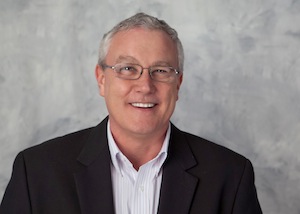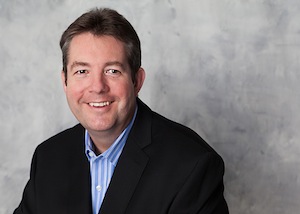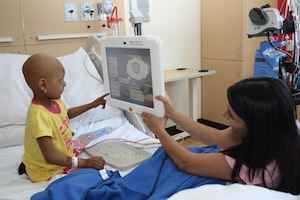Consultant Profile | Vantage Technology Advances Healthcare, Education, Corporate Communications

QUICK BIO
Company: Vantage Technology Consulting Group
Headquarters: El Segundo, CA; Concord, MA; also offices in New York, NY and Collegeville, PA
Overtime: Vantage once bid itself out of a job by telling a new client that none of their equipment needed replacing, contrary to what their network vendor had reported, and saving the client millions of dollars. Vantage considers them a client for life.
Riding the very first waves of convergence, back around 2001, Phil Crompton and Richard Bussell saw an opportunity to branch off from the multinational architectural firm they worked for to form Vantage Technology Consulting Group.
Convergence was one of two “really key ideas” the new partners used as the cornerstones to their consulting business. At the time, convergence was a very new idea. “People were talking about [convergence], but didn’t know what it meant,” Bussell said. “Vantage is going to have our clients think about all their technologies together,” like a modern silo, as one system. Vantage aimed to help clients understand convergence from that point of view. “And it was a pretty big stretch for most people at that time.”
The other key idea for Vantage was taking a strategic view of technology from a number of different perspectives. In other words, thinking about how exactly technology is going to help the hospital, or university—the main markets Vantage started out with—do what they do. “The whole view was that there were firms around that could do both ends of the work [strategic and detailed design], but very few firms could cross the divide between them,” Bussell said.
A daily selection of the top stories for AV integrators, resellers and consultants. Sign up below.


Richard Bussell, Principal, Vantage TechnologyPhil Crompton, Principal, Vantage Technology
The Southern California-based firm grew pretty quickly from the start, based on Bussell and Crompton’s connections in the area and their reputations. With growth, the company turned its attention to managing systems and the people that support them. New staff was brought on with more CIO type backgrounds to help clients thinking about groups, staffing, and management of the technology. Vantage also invested in new staff with strong networking skills.
Around this time, the partners also decided to open up an East Coast office, headed up by Bussell, who, along with his wife, decided on the Boston area where it was not only a great place to raise children, but it was a great market for healthcare and education, as well as being rich with architectural talent. Today, Vantage Technology also has satellite offices in Philadelphia and New York City, the latter to complement a major project at the United Nations headquarters. Vantage has worked on a number of city government facilities before, “but the UN takes it to the next level,” Crompton proudly stated.
Vantage is also making a big push right now in the corporate market, citing a big project on DirecTV’s California headquarters and R&D facilities. Since this is the type of job where you can’t close the whole facility and tell people not to come to work while the AV work is being done, they use a phased approach, which provides some interesting opportunities to try more experimental technology.

Children’s Hospital Los Angeles Marion and John E. Anderson Pavilion features patient information, entertainment, and education systems.
As Vantage’s core markets have developed, the firm has become more strategic with upstream planning, making sure a new facility fits into the rest of a larger campus, a strategy that works across education, healthcare, and corporate markets.
In the healthcare arena, Crompton cited a number of game-changing technologies they are working on, particularly, patient entertainment and education systems. Guestrooms no longer feature a basic TV to keep a patient busy; technology is being used in patient surveys during their stays, instead of after, when there’s nothing to be done about any problems. This way, hospital staff can meet with a patient to address issues during their stay. This is critical in an age moving increasingly toward hospital reimbursements depending upon patient satisfaction and readmission rates.
These patient entertainment and education systems are capable of streaming video on demand and providing educational information about a patient’s condition. Nurses and doctors can prescribe this to a patient where they can even take comprehension quizzes at the conclusion of care. This information can be sent back to the patient’s electronic medical records to document their participation in the educational material and their comprehension of it. “An exciting thing with technology and healthcare is that the building is starting to be the first level of protection for the patient,” Crompton said.
About 90 percent of Vantage’s hospital clients are looking at these systems, and Crompton predicts that, “not long from now, we will see this in most places.”
The next generation of these systems are all cloud based, and there are a couple of companies already offering these. This capability makes the systems suddenly very scalable, Crompton said, “all the way down to the small hospitals.”
While Vantage Technology Consulting Group guides its clients through the whirlwind of AV technologies sweeping its markets, it stands as testament to how highly advanced audiovisual communications continue to change the way the world does business.
Lindsey Adler is associate editor of SCN, Residential Systems, and Healthcare AV.
Lindsey M. Adler is an audiovisual storyteller based in New York.

